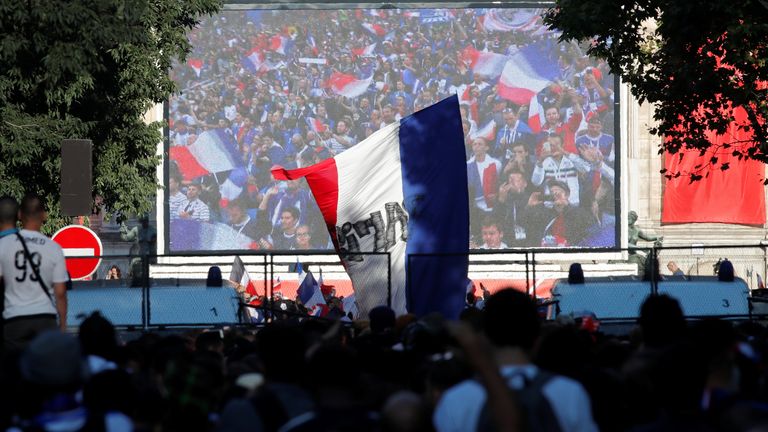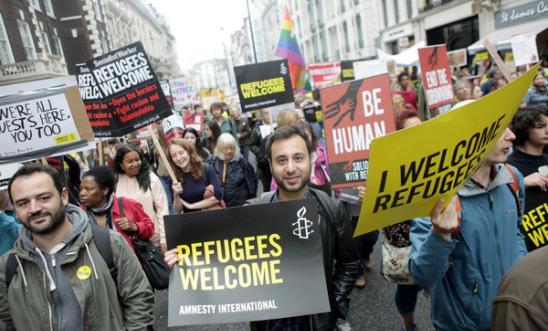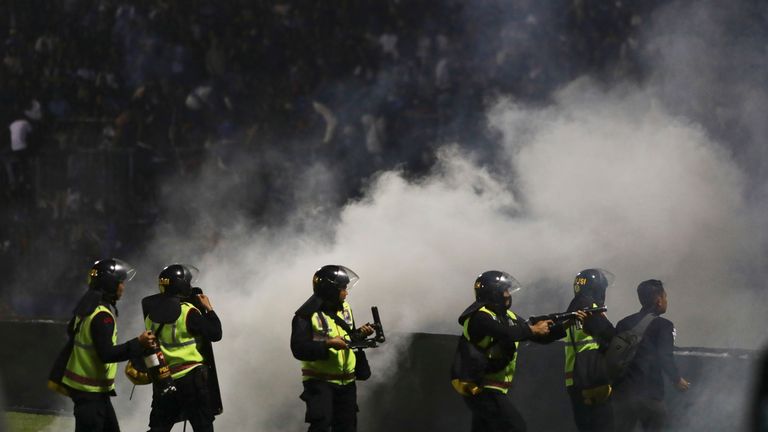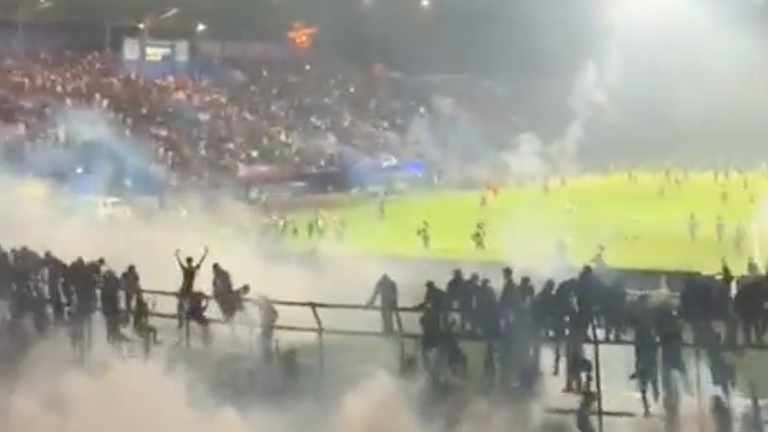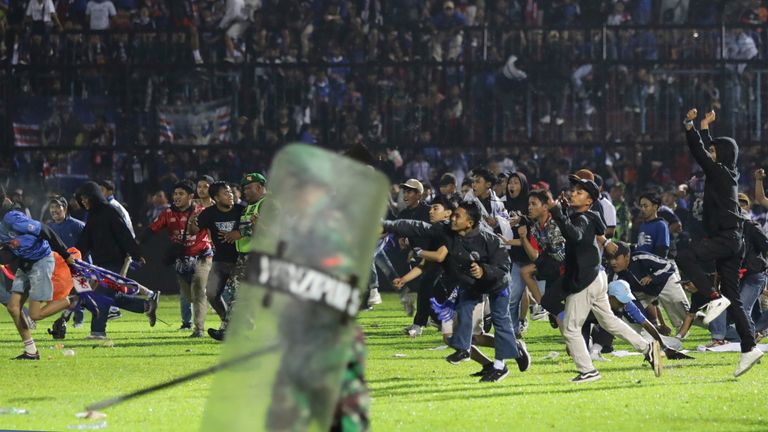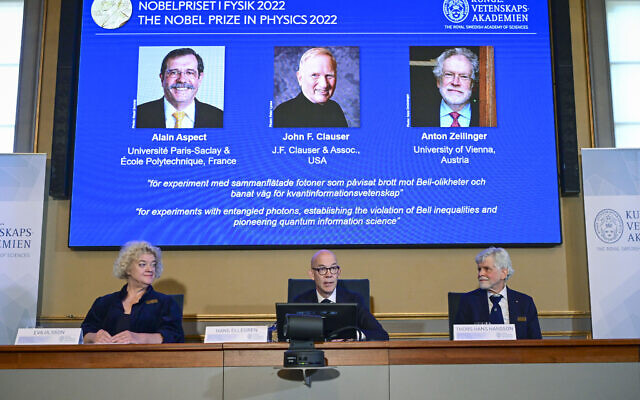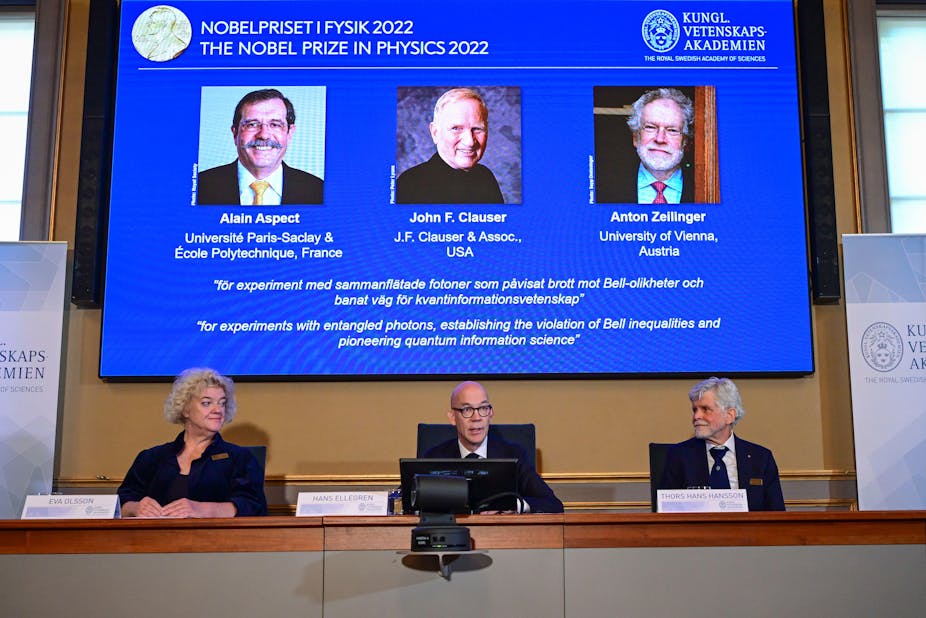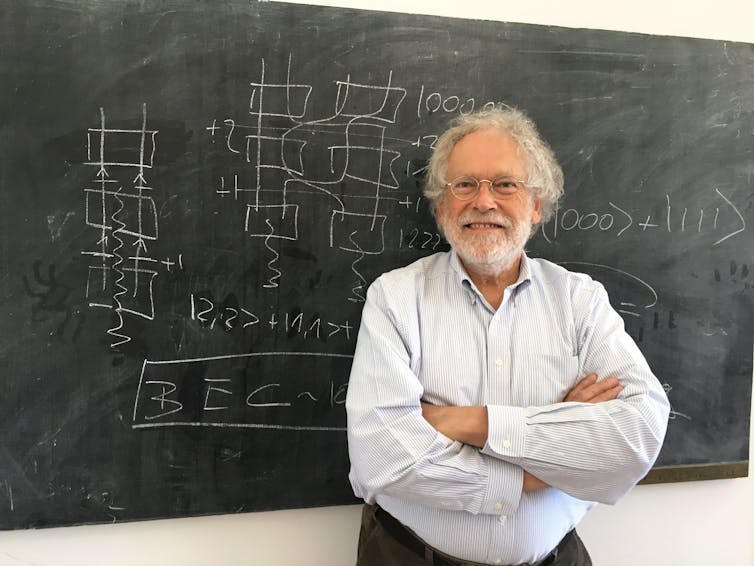October 5, 2022
Dubai: Iranian President Ebrahim Raisi appealed for national unity and tried to allay anger against the country’s rulers, even as the anti-government protests that have engulfed the country for weeks continued to spread to universities and high schools.
The recent disappearance and death of a 17-year-old girl in Tehran, however, has unleashed an outpouring of anger on Iranian social media.

Iranian President Ebrahim Raisi.
Nika Shahkarami, who lived in the capital with her mother, vanished one night last month during the protests in Tehran, her uncle Kianoush Shakarami told Tasnim news agency. She was missing for a week before her lifeless body was found in a Tehran street and was returned to her family, Tasnim reported, adding relatives had not received official word on how she died.
Foreign-based Iranian activists allege she died in police custody, with hundreds circulating her photo and using her name as hashtag online for the protest movement. The prosecutor in the western Lorestan province, Dariush Shahoonvand, denied any wrongdoing by authorities and said was buried in her village Monday.
“Foreign enemies have tried to create a tense atmosphere after this incident,” he told the Hamshari daily, without elaborating on what happened.
President Raisi acknowledged on Tuesday that the Islamic Republic had “weaknesses and shortcomings,” but repeated the official line that the unrest sparked last month by the death of a woman in the custody of the country’s morality police was nothing short of a plot by Iran’s enemies.
RELATED ARTICLE
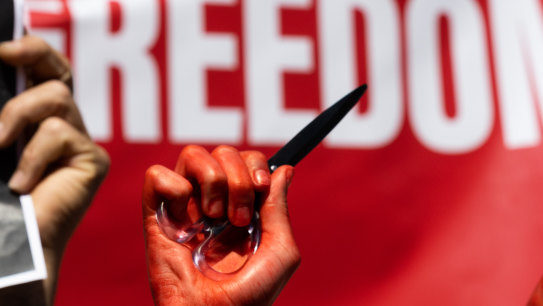
Protest
‘Say her name’: Melbourne’s Iranian community protests over Mahsa Amini death
“Today the country’s determination is aimed at cooperation to reduce people’s problems,” he told a parliament session. “Unity and national integrity are necessities that render our enemy hopeless.”
The protests, which emerged in response to the death of 22-year-old Mahsa Amini after her arrest for allegedly violating the Islamic Republic’s strict dress code, have embroiled dozens of cities across the country and evolved into the most widespread challenge to Iran’s leadership in years. A series of festering crises have helped fuel public rage, including the country’s political repression, ailing economy and global isolation.
The scope of the ongoing unrest, the most sustained in over a decade, remains unclear as witnesses report spontaneous gatherings across the country featuring small acts of defiance — protesters shouting slogans from rooftops, cutting their hair and burning their state-mandated headscarves.
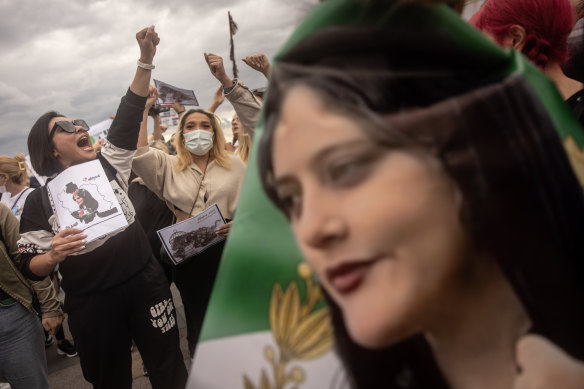
People hold signs and chant slogans during a protest against the death of Iranian Mahsa Amini and the government of Iran in Istanbul, Turkey.
The hardline Kayhan daily on Tuesday tried to downplay the scale of the movement, saying that “anti-revolutionaries,” or those opposed to the Islamic Republic, “are in the absolute minority, possibly 1 per cent.”
But another hardline newspaper, the Jomhuri Eslami daily, cast doubt on government claims that foreign countries were to blame for the country’s turmoil.
“Neither foreign enemies nor domestic opposition can take cities into a state of riot without a background of discontent,” its editorial read.
Iran’s security forces have sought to disperse demonstrations with tear gas, metal pellets, and in some cases live fire, rights groups say. Iran’s state TV reports that violent confrontations between protesters and the police have killed at least 41 people, but human rights groups say the number is much higher.
An escalating crackdown on the press, with dozens of journalists arrested in the last few weeks, has stifled most independent reporting on sensitive issues such as the deaths of protesters.
As the new academic year began this week, demonstrations spread to university campuses, long considered sanctuaries in times of turmoil. Videos on social media showed students expressing solidarity with peers who had been arrested and calling for the end of the Islamic Republic. Roiled by the unrest, many universities moved classes online this week.
The prestigious Sharif University of Technology in Tehran became a battlefield on Sunday as security forces surrounded the campus from all sides and fired tear gas at protesters who were holed up inside a parking lot, preventing them from leaving.
In one video on Monday, students at Tarbiat Modares University in Tehran marched and chanted, “Jailed students must be freed!” In another, students streamed through Khayyam University in the conservative city of Mashhad, shouting, “Sharif University has become a jail! Evin Prison has become a university!” — referring to Iran’s notorious prison in Tehran.
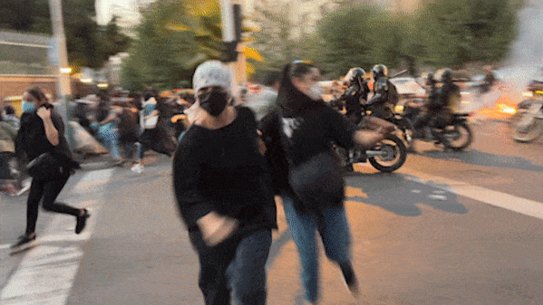
Iran
‘Did you clean your phone?’: The question that could be life or death for Iranian protesters
Protests also appeared to grip gender-segregated high schools across Iran, where groups of young schoolgirls waved their hijabs and chanted “Woman! Life! Freedom!” in the city of Karaj west of the capital and in the Kurdish city of Sanandaj on Monday, according to widely shared footage.
The response by Iran’s security forces has drawn widespread condemnation. On Monday, President Joe Biden said his administration was “gravely concerned about reports of the intensifying violent crackdown”.
The British foreign office summoned the Iranian ambassador in London.
“The violence levelled at protests in Iran by the security forces is truly shocking,” said British Foreign Secretary James Cleverly.
Security forces have rounded up an untold number of demonstrators, as well as artists who have voiced support for the protests. Local officials report at least 1500 arrests.
Shervin Hajipour, a singer who emerged as a protest icon for his wildly popular song inspired by Amini’s death, was detained last week. His lawyer said he was released on bail Tuesday and rejoined his family in the northern city of Babolsar.

Hundreds protest after death of woman in Iran
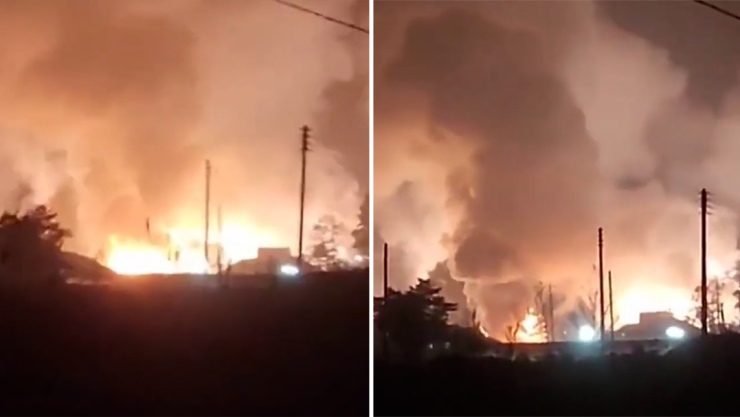
Hundreds have taken to the streets today to protest in support for
In his somber ballad, “For the sake of,” he sings of why Iranians are rising up in protest.
“For dancing in the streets,” he intones. “For my sister, for your sister, for our sisters.”
Raisi’s claims echoed those of Iran’s supreme leader Ayatollah Ali Khamenei, who blamed the United States and Israel, the country’s adversaries, for inciting the unrest in his first remarks on the nationwide protests on Monday. It’s a familiar tactic for Iran’s leaders, who have been mistrustful of Western influence since the 1979 Islamic Revolution.
Iran has also blamed the unrest on Kurdish opposition groups in the country’s northwest that operate along the border with neighbouring Iraq. On Tuesday, Iran’s paramilitary Revolutionary Guard bombed three bases belonging to Kurdish militant groups in Iraq’s semi-autonomous Kurdish region with drones and artillery, the semiofficial Tasnim news agency reported, without elaborating on casualties. It was the latest in a wave of Iranian bombardments that killed at least nine people last month.
AP
October 3, 2022
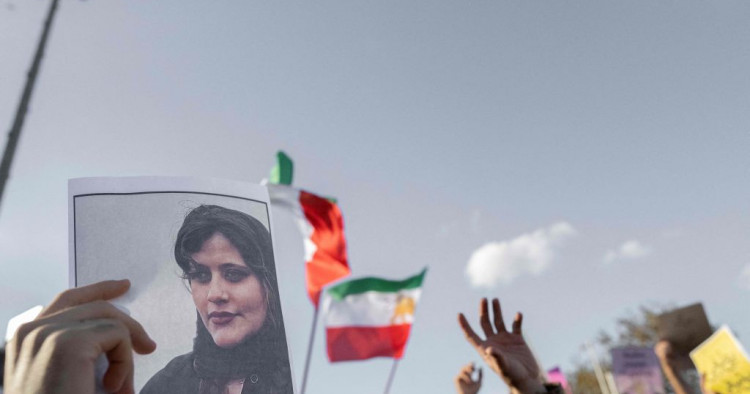
Abdolrasool Divsallar
Non-Resident Scholar
The one-year-old Raisi administration pushed forward a controversial set of ultra-conservative social policies that increased the division between state and society and played a role in fueling the recent protests.
Islamic Republic leaders are choosing to move up the ladder of escalation rather than step back and revise their policies, believing they can make the protests too costly to continue.
The tragic death of Mahsa Amini, an Iranian women arrested by the Islamic Republic’s so-called “morality police,” incited nationwide protests on Sept. 17. Like in previous incidents that sparked popular demonstrations, including after Iran’s downing of a Ukrainian airliner in 2020, the authorities initially denied responsibility for triggering the crisis. Instead, the state’s propaganda machine launched a fierce disinformation campaign, blaming Mahsa’s underlying health conditions for causing her death. But when protests refused to die down, the Islamic Republic adopted what has become its classic response: “maximum suppression,” utilizing all means of violence and imprisonment to stop the rallies.
Discontent in the Islamic Republic has been on the rise for at least the last decade. But a year into Ebrahim Raisi’s presidency, his administration, which represents the 1979 revolution’s ultra-conservative elements, pushed forward a controversial set of social policies that played a role in fueling the latest round of protests. Namely, amid the failure of the government’s economic policy as well as Iran’s continued international isolation due to its uncompromising stance in the nuclear talks, the administration sped up the implementation of a social engineering plan that included creating a “national internet” and the “restoration of the hijab” as its top priorities.
These ideas have long been discussed among Iran’s hardliners, such as those at the Center for the Islamic-Iranian Model of Progress and the Office of the Supreme Leader. But what made these policies so seminal to the present situation is their implicit dismissal of the values held by the majority of Iranians, who fall outside the conservative camp. Rather than recognizing the heterogeneity of Iranian society, the authorities have pushed to unify the whole population around a state-driven ideology and way of life. The result has been a further restriction of social freedoms in Iran since the start of Raisi’s presidency.
Consequently, the Islamic Republic now faces a previously unseen level of division between the state and society, with the state’s influence over the population rapidly declining. Discontent has spread and hope in the prospects for change has waned, while the core of supporters of the Islamic Republic has shrunk. Street protests are now widely seen, especially by the new Generation Z, as the only viable way to achieve change.
Nonetheless, the Iranian security elites continue to judge their traditional techniques of suppression as effective. They follow a simple rationale: no matter the context, whether facing international condemnation of their nuclear program or a domestic crisis, the leaders of the Islamic Republic choose to ascend the ladder of escalation rather than take a step back and revise their policies. They believe keeping up the pressure will raise the costs for their opponents to the point where it is irrational to continue opposing Tehran. In the streets of Iranian cities, this obdurate approach has resulted in dozens of Iranians killed and thousands violently attacked by security forces. Meanwhile, the prospects for change within the Iranian leadership will remain highly limited so long as its members continue to see their current strategy as key to ensuring their hold on power.
Monday Briefing: As Iran’s protests spread, the regime pursues “maximum suppression” | Middle East Institute (mei.edu)
By Euronews with AP • Updated: 04/10/2022
This video is not available in your location
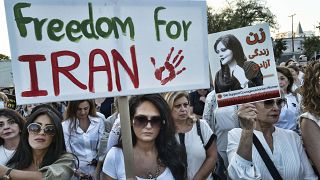
Protest over Iran unrest
Students in Iran continued to defy the government and security forces on Tuesday, by protesting for more social freedoms in the aftermath of the death of a young Iranian woman in September.
Twenty-two-year-old Mahsa Amini died after being arrested by Iran's so-called morality police for allegedly wearing her mandatory Islamic headscarf too loosely. She died in hospital several days after being released from police custody.
Iranian president Ebrahim Raisi tried to relieve anger against the country's theocratic regime, as anti-government protests spread to universities and high schools.
Iran’s security forces have sought to disperse demonstrations with tear gas, metal pellets, and in some cases live fire, human rights groups say. Iran’s state TV reports that violent confrontations between protesters and the police have killed at least 41 people, but human rights groups say the number is much higher.
An escalating crackdown on the press, with dozens of journalists arrested in the last few weeks, has stifled most independent reporting on sensitive issues such as the deaths of protesters.
The recent disappearance and death of a 17-year-old girl in Tehran, however, has unleashed a renewed outpouring of anger on Iranian social media.
Human rights expert Hadi Ghaemi told Euronews that Supreme Leader Ayatollah Ali Khamenei's decision to blame the US and Israel for masterminding the protests was devoid of logic.
"To call them agents of Israel and America was a very tired rationale that Iran's supreme leader has used to justify his brutal rules, so many people thought it's really the last words of a dictator who refuses to acknowledge reality and wants to relate everything to a foreign-based enemy," Ghaemi, Director of Center for Human Rights in Iran said.
Solidarity with Iran as worldwide protests staged over death of Mahsa Amini
There has been criticism of the US and the EU’s response to the Iran crisis. Ghaemi believes both powers are being too passive in addressing the repression of protests, which have left dozens of people dead.
"Europe and US have been very timid in reacting to the events unfolding. And it's clear to me that they're trying to gain a political point for their own purposes in the negotiations, toward a nuclear deal, which has been stalled. Let's remember for nearly two years. There is no rush to sign that deal right now. And give legitimacy to the Islamic Republic," Ghaemi said.
Officially, at least 1,500 people have been arrested since protests erupted on 16 September.
Among those was Shervin Hajipour, a composer and singer of a song in support of the protests that became an anthem for the demonstrators. He was released on probation on Tuesday.
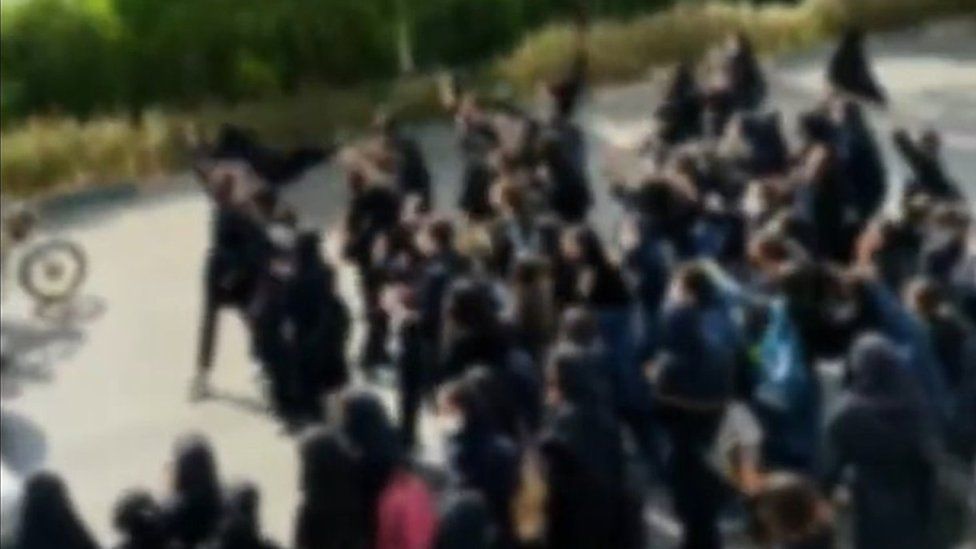
In Shiraz, dozens of schoolgirls were filmed blocking a main road while waving their headscarves in the air
By David Gritten
BBC News
In an unprecedented move, schoolgirls have joined the protests that have swept Iran since the death of a woman detained for breaking the hijab law.
Videos verified by the BBC show teenage students in uniforms waving their headscarves in the air while shouting slogans against clerical authorities.
The chants echoed those heard at the wider protests over the past two weeks.
In Karaj on Monday, hijab-less girls were filmed forcing a man thought to be a local official out of their school.
The footage shows them shouting "shame on you" and throwing what appear to be empty water bottles at the man until he retreats through a gate.
The BBC is not responsible for the content of external sites.

In another video from Karaj, which is just to the west of the capital Tehran, students are heard shouting: "If we don't unite, they will kill us one by one."
In the southern city of Shiraz on Monday, dozens of schoolgirls blocked traffic on a main road while waving their headscarves in the air and shouting "death to the dictator" - a reference to the Supreme Leader, Ayatollah Ali Khamenei, who has the final say on all state matters.
The BBC is not responsible for the content of external sites.
Further protests by schoolgirls were reported on Tuesday in Tehran and the north-western cities of Saqez and Sanandaj.
A number of students were also photographed standing in their classrooms with their heads uncovered. Some were raising their middle fingers - an obscene gesture - at portraits of Ayatollah Khamenei and the founder of the Islamic Republic, Ayatollah Ruhollah Khomeini.
The BBC is not responsible for the content of external sites.

The protests by the schoolgirls began hours after Ayatollah Khamenei, who has final say on all state matters, broke his silence on the unrest and accused the United States and Israel, Iran's arch-enemies, of orchestrating "riots".
He also gave his full backing to the security forces, which have responded to the protests with a violent crackdown.
The unrest was triggered by the death of Mahsa Amini, a 22-year-old Kurdish woman who fell into a coma after being detained by morality police on 13 September in Tehran for allegedly violating the law requiring women to cover their hair with a hijab, or headscarf. She died in hospital three days later.
Her family has alleged that officers beat her head with a baton and banged her head against one of their vehicles. The police have denied that she was mistreated and said she suffered "sudden heart failure".
The first protests took place in Kurdish-populated north-western Iran, where Ms Amini lived, and then spread rapidly across the country.

US envoy for battling antisemitism says the entire world as well as the Iranian people know that Islamic Republic’s inherent misogyny has sparked the current women-led uprising.
Special Envoy to Monitor and Combat Antisemitism Deborah E. Lipstadt said late Monday that Supreme Leader Ali Khamenei "can blame ‘Zionists,' the US, or anyone else, but it’s clear to the world and the Iranian people that his regime’s violent misogyny ignited these women-led protests.”
She was referring to Supreme Leader Ali Khamenei’s first reaction to ongoing unrest on Monday, saying that the protests were planned and not staged by "ordinary Iranians…I am saying explicitly and clearly, riots and insecurity were planned by America and the usurper, fake Zionist regime,” said the aging 83-year-old Khamenei who has ruled for 33 years.
Echoing Khamenei’s remarks, Iran’s President Ebrahim Raisi said on Tuesday the ongoing protests – triggered by the death in custody of 22-year-old Mahsa Amini -- are a riot organized by the US and Israel in order to prevent the Islamic Republic’s progress.
Also on Monday, US Congressman Brad Sherman (D-Calif) said that “Today the Ayatollah erroneously tried to blame the US and Israel for Iran’s protests.”
Referring to a bipartisan and bicameral resolution to commemorate Mahsa Amini's death and to convey US support for the protests, the representative added that “through resolutions like this, the world is showing that the truth behind the protests is clear, and that the support behind those calling for equality and justice in Iran is resolute.”
